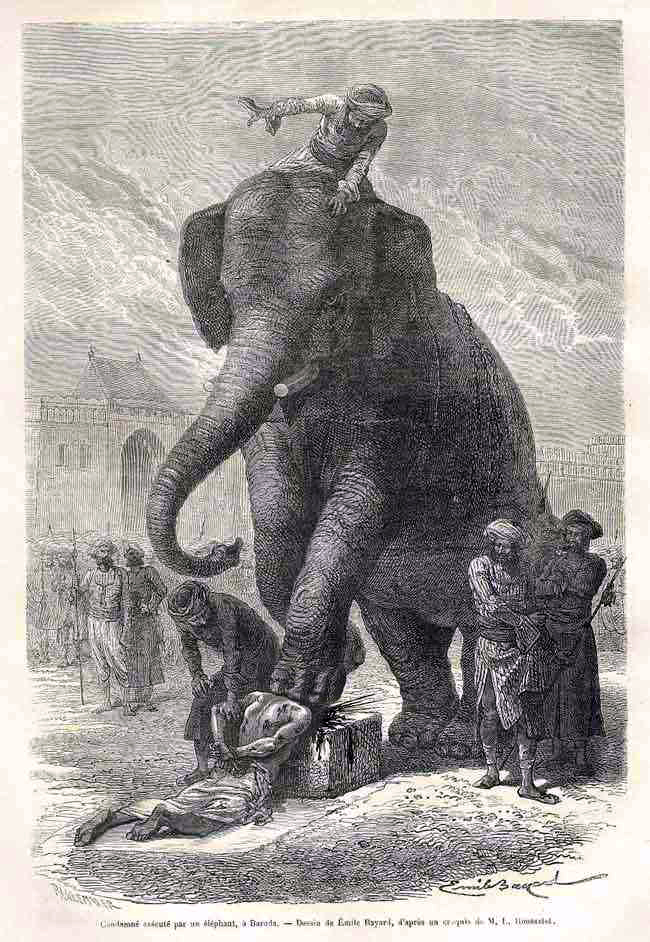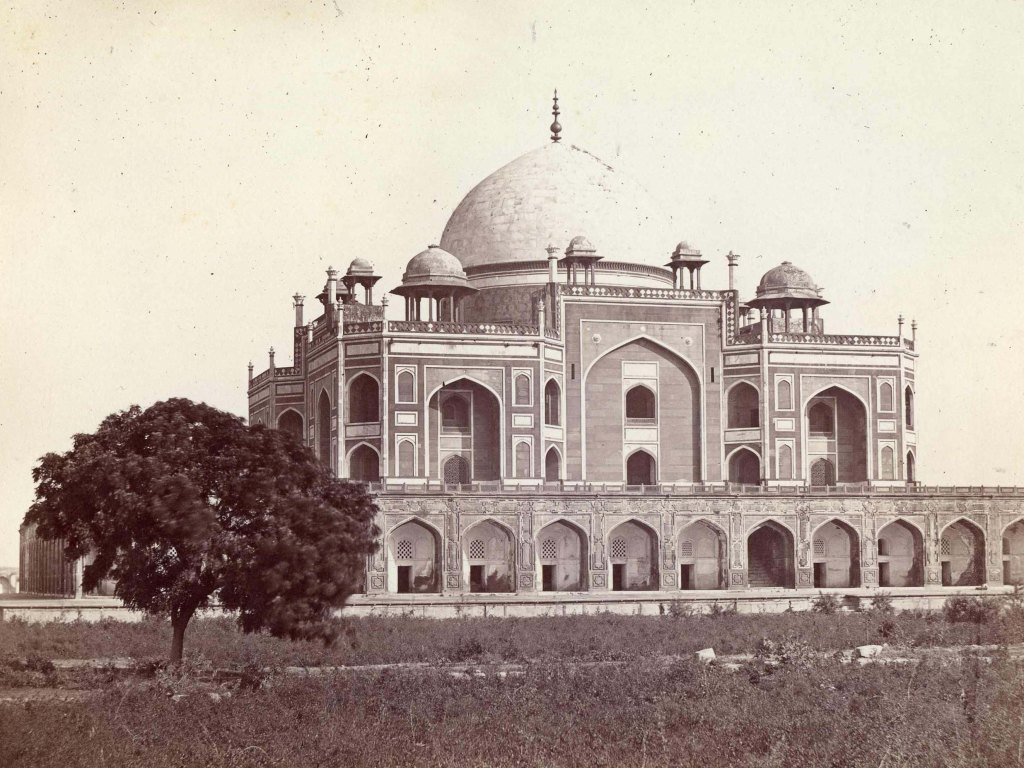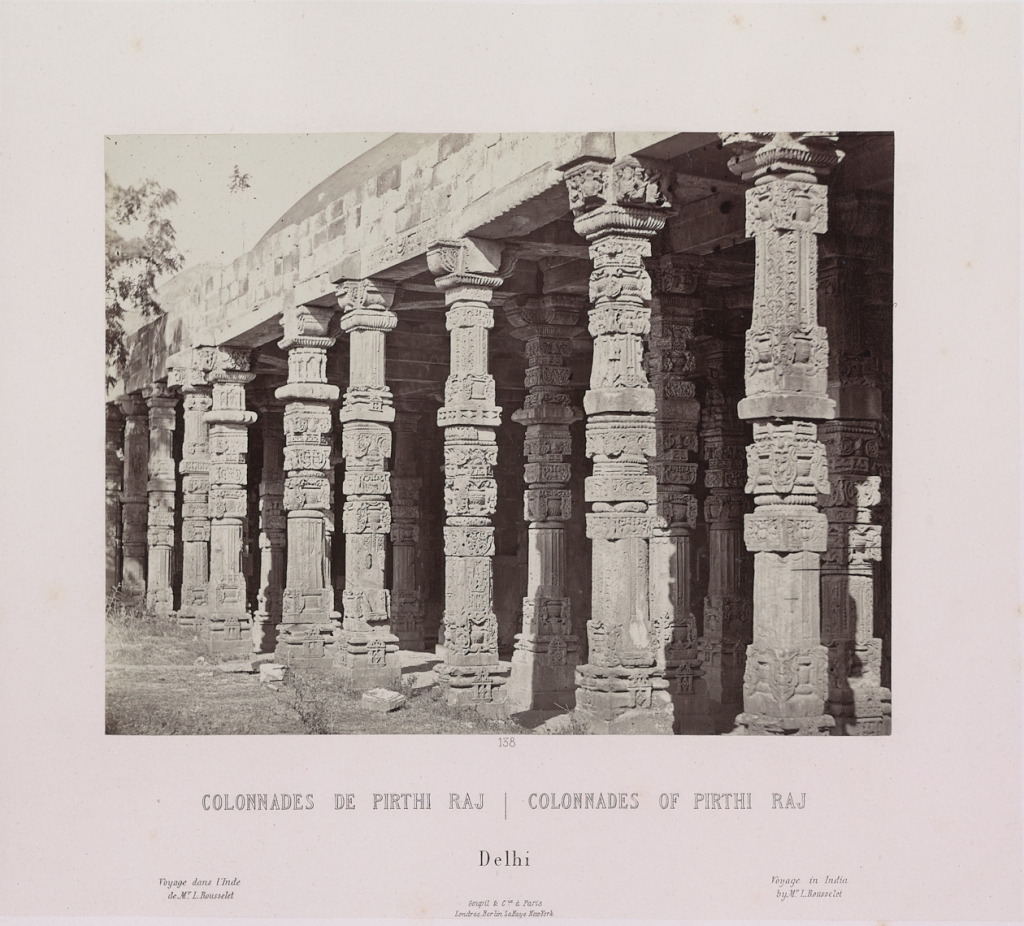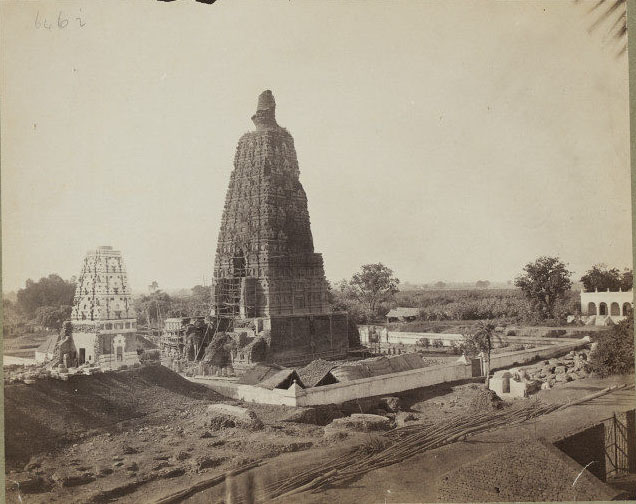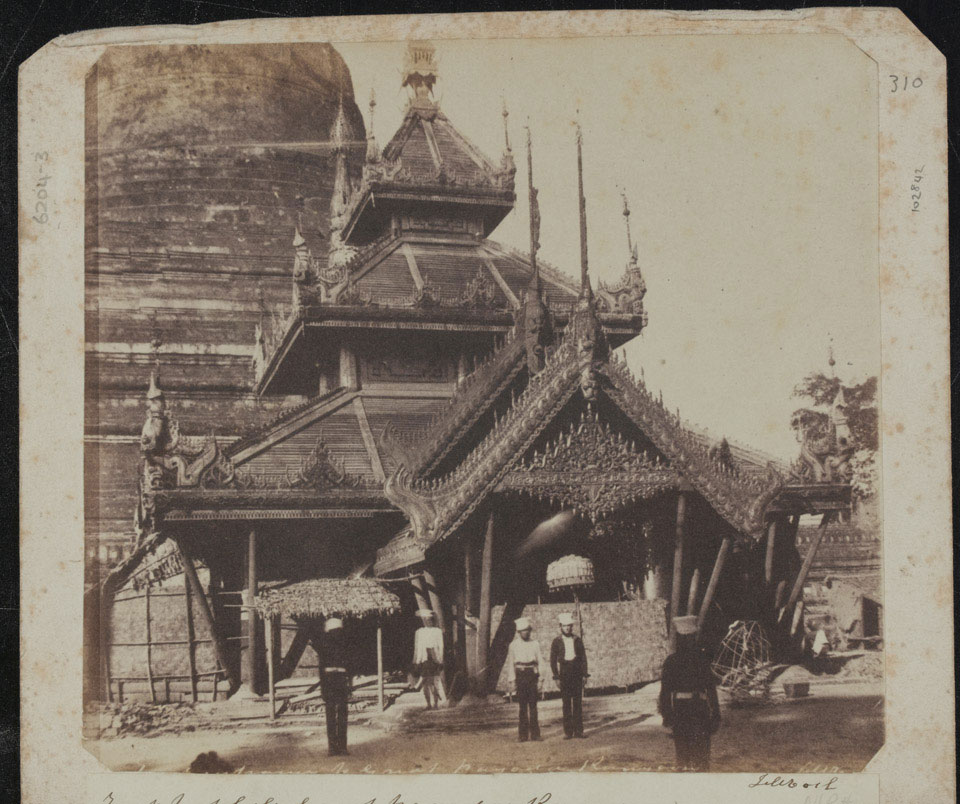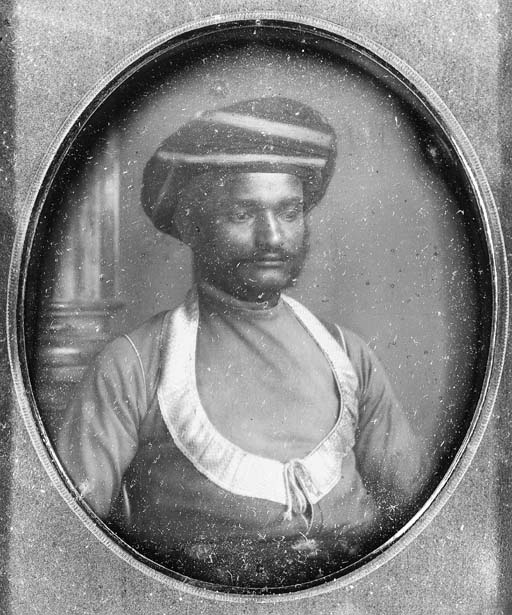Marie Théophile Louis Rousselet (1845-1929), was a French traveller, writer, Geographer, archaeologist and photographer, who visited India in 1863. Amazed by the diverse richness of the landscapes, art and culture, and people, Rousselet extended his stay in India till 1868. He learnt Photography after reaching India, with a sole purpose to preserve the memory of the monuments he visited.
About his experience, he wrote in his diary, “It was on seeing these generally unknown masterpieces at Dubbhoee that I regretted I had not the power of reproducing them by photography, and felt that it would be impossible to continue my explorations profitably without the assistance of that art. As soon, therefore, as I returned to Baroda, I applied myself seriously to learn photography; and with that view, I procured from Bombay all the necessary apparatus“
During his stay in India, he photographed and produced more than six hundred albumen images. Rousselet photographed India’s historic monuments, religious beliefs, princely states, old civilisation and customs and manners of its diverse people. He documented India with a fresh mind and with new perspective independent of British imperial authorities.
On his return to France in 1868, He published his experiences in India, along with illustration in the well known French weekly journal Le Tour du Monde. His long series of articles brought out in Le Toru du Monde was followed by a bulky, lavishly produced publications in 1875 “l’Inde des Rajahs: Voyage dans l’Inde Centrale, dans les presidences de Bombay et du Bengale” and another one and “Les royaumes de l’Inde “in 1879.
These two publications detail a key period of Rousselet in India from 1864 to 1868. The publications combined text and illustrations of hand-drawn maps, notes, sketches, a résumé of the places and dates on which Rousselet met various Indian dignitaries, and albumen photographic prints, primarily of Bombay and its surroundings.
These unique manuscript publications which are reproduced from Rousselet diaries present a meticulous, firsthand account of his visits. He travelled across North and central India and recorded his observations on Temples, historic sites and places of geographical interest. He also documented local customs; methods of transport and engineering; and the games, entertainments, and other aspects of court life he observed while a guest of various local rulers. His entries also include financial notes and news from family and friends.
Rousselet visited and documented monuments in Agra, Ahar, Ajmer, Alwar, Amber, Arawalli, Bénarès, Chittor, Datia, Dig, Govindgarh, Gwalior, Jhansi, Kajraha, Lashkar, Orchha, Sonagarh, Sultanganj, and Udaipur.
Le Tour du Monde, a French weekly travel journal was first published in January 1860. It contained all Rousselet’s stories combined text and photographs using woodcut, a relief printing technique.
The history of nineteenth-century printing is intimately bound up with the engraved boxwood block, the single most significant piece of illustration technology, which dominated early Victorian book illustration. The first book to be so illustrated was Thomas Bewick‘s ‘The General History of Quadrupeds (1790)’. The artist engraved his white line illustrations on boxwood blocks. Artist-engraver remained a common figure in book illustration until mid-century.
The technique of wood engraving was closely associated with the development of illustrated publications in general. However, the wood engravings in the monographs were not made in the same way once used by Thomas Bewick. The process may have resembled standard wood engravings, but were products of photoxylography (A process in which a photograph is printed on wood to use as a template for engraving). This technique combined traditional wood engraving with photography. It was invented in circa 1860 and subsequently employed on a large scale for illustrations of every kind of art materials. A characteristic feature of this technique was that the image was transferred photographically to the woodblock, into which the print marker engraved the compositions by hand; the relief composition in the woodblock was then transferred to a metal galvano, from which almost unlimited copies of the image could be printed in a short time.
Rousselet is important because his illustrations are probably the most often coped visual source on 19th century India.
Reference
Visualizing Space in Banaras: Images, Maps, and the Practice of Representation Edited by Martin Gaenszle, Jörg Gengnagel
India and its Native Princes, Marie Théophile Louis Rousselet, 1869
Nineteenth-century Prints after Lawrence Alma-tadema, Jozef Israels and Ary Scheffer, by Robert Verhoogt, Amsterdam University Press, 2007
Visualizing Space in Banaras: Images, Maps, and the Practice of Representation (Ethno-Indology), by Martin Gaenszle (Editor), Jorg Gengnagel (Editor)
http://www.musee-aquitaine-bordeaux.fr/fr/search/node/Rousselet
https://www.tribuneindia.com/2001/20010707/windows/slice.htm
http://www.jcosmas.com/albumenandsilverprints8.html
http://www.musee-aquitaine-bordeaux.fr/en/article/palace-birsing-deo-and-lake-duthhia-1867
https://www.getty.edu/research/special_collections/notable/rousselet.html
http://www.victorianweb.org/art/illustration/tech1.html

